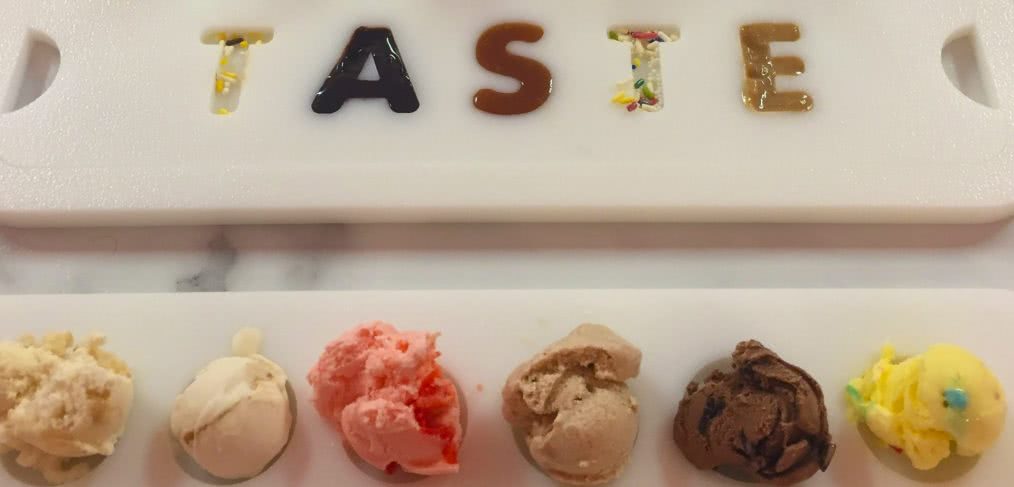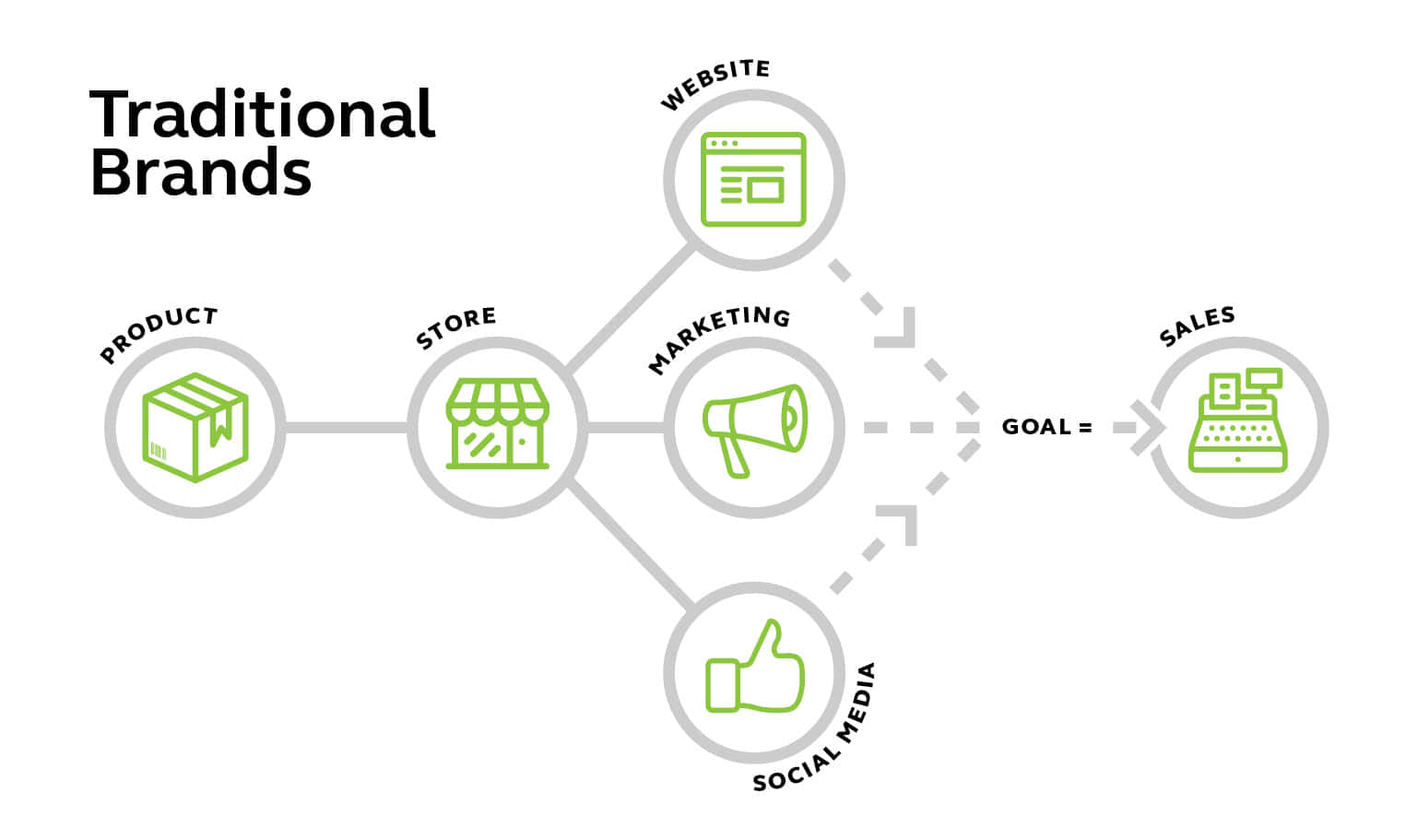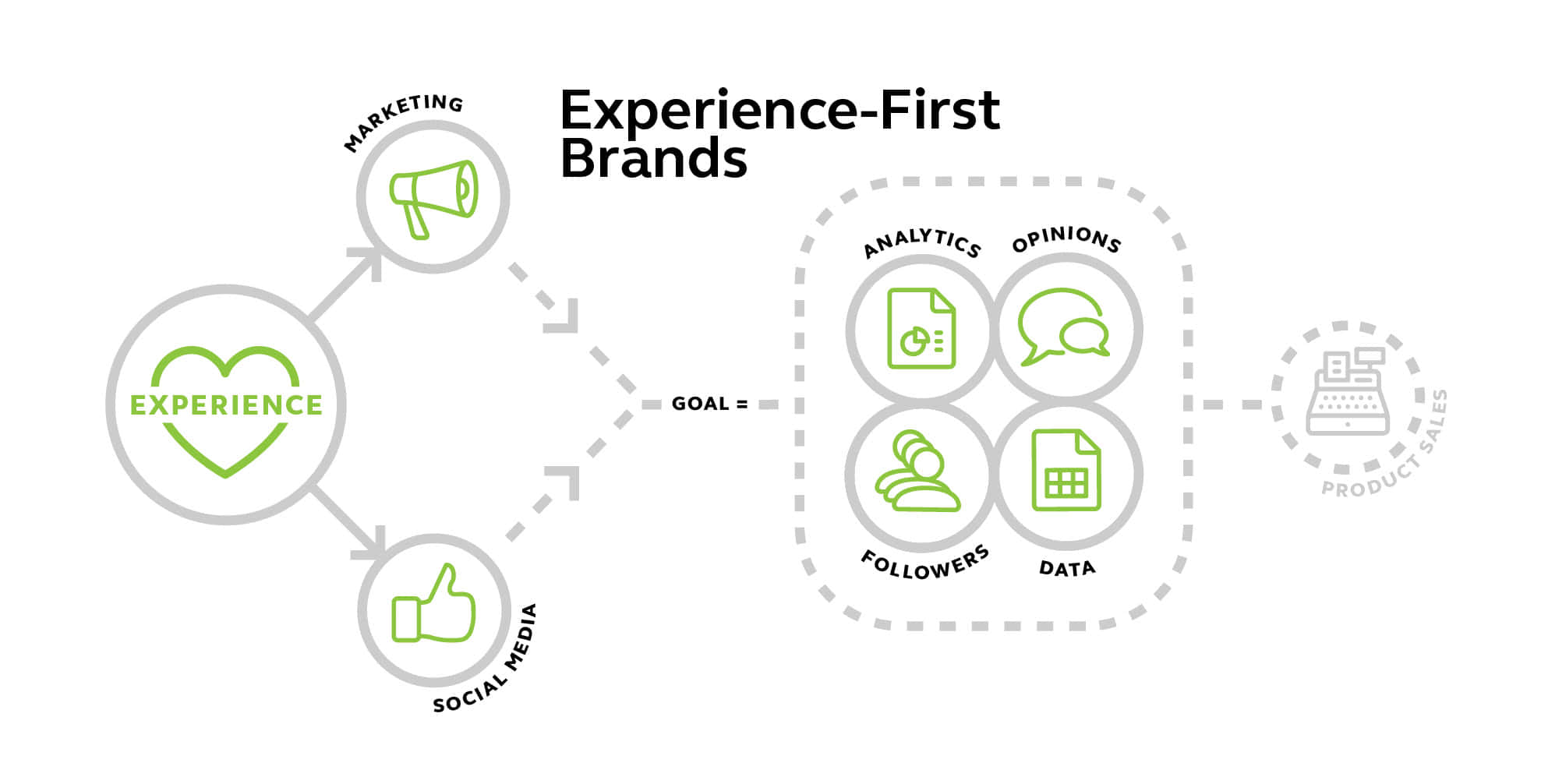
Retail’s Digital Flip
Tom Pulk and Michelle Decker discuss how digital platforms and social media are turning retail and branding inside out.
The traditional ‘product first’ model of retail has been transformed by an increasingly digital world.
Think about a standard retail brand: they start with products that they merchandise in brick-and-mortar stores with an accompanying website, hoping to turn customer footfall or clicks into sales. As trends and shopping habits change, the retailer will focus on different aspects of customer experience and larger brands will typically post new products and announcements on various social media channels. At the end of the day, the brand is tied to its products, how good they are and how they make customers feel.

Digital platforms within and outside of brands have forced brick-and-mortar to compete with an increasingly disseminated market as digital platforms have solved the product problem by offering in-home try-on with simple returns (think: Casper mattresses or Stitch-Fix). In this digital landscape, customers no longer need to visit a store to engage with products.
What is most interesting about this transformation is not that customers are shopping less in physical spaces (this trend is nothing new), but how consumers are processing life in an increasingly digital world, leaving an opportunity for what happens in physical spaces.
When so much of what we consume is totally intangible (media buzz or information, for example), the physicality of experience is becoming increasingly more valuable.
Disrupting with an “Experience First” Model
Almost half (48%) of retailers say that digital initiatives permeate most marketing activities (Source: Adobe CMO). And with new digital channels popping up all the time, being adaptable and flexible is more important than ever for retailers and retail designers.
This flexibility and digital focus goes far beyond product placements on social media. We’re not just seeing new platforms and concepts, we’re seeing retailers use existing ones in completely different ways. In some cases, they’re turning the very idea of branding inside out.

Take the Museum of Ice Cream as one recent example. It didn’t start with a product, it started entirely as an experience. People bought tickets for the privilege of taking a great Instagram photo. There was a very limited retail component in the beginning. Instead, the experience is the product, which visitors broadcasted non-stop on Instagram and other social media channels. The museum’s number of followers led to a partnership with Target selling Pint Shop ice cream. So, the experience came first, the product came later.
Even retailers with existing products and brands are getting in on this “experience first” model. Brands know they need to maintain a brick-and-mortar presence, but because of the price of real estate, they are turning stores into experience venues rather than pure product showrooms.
At Watches of Switzerland, we designed the ground level as a sales floor during the day, but it transforms into an event space at night. That kind of flexibility, not to mention all the responsive tech throughout the store, is becoming essential to retailers trying to keep up with the latest trends.
New Thinking, New Goals
Disruption doesn’t just change results; it’s changing the foundational goals of having a brick-and-mortar store.
Some clients are moving away from the permanent flagship or stalwart brick-and-mortar location, focusing instead on pop-ups as their in-store presence. And it’s not just new companies or online startups using this tactic; even established brands are moving in this direction.
One brand, which must remain nameless for the time being, is looking to take on temporary leases with quick build-outs. The novel aspect is that they’re planning on minimal in-store merchandise and focusing almost exclusively on individual products in displays designed specifically for Instagram and other social channels. In this model, the brand isn’t as interested in gaining social followers for the products; they’re using Instagram and other social channels as real-time customer engagement tracking and press monitoring. It’s the world’s largest consumer survey.
Social media and digital channels are now informing the products rather than products driving sales. Whenever the goals change like that, expect disruptors, early adopters and everyone else to scramble to catch up.
